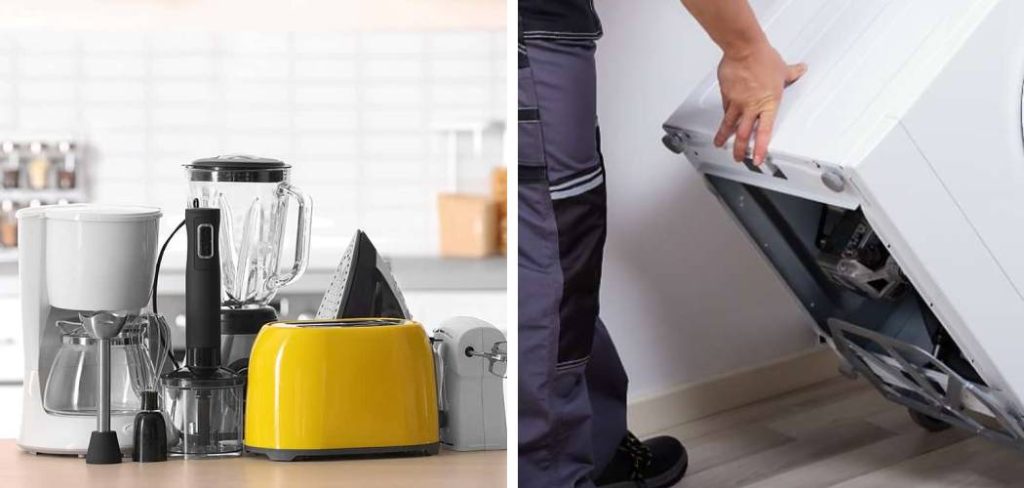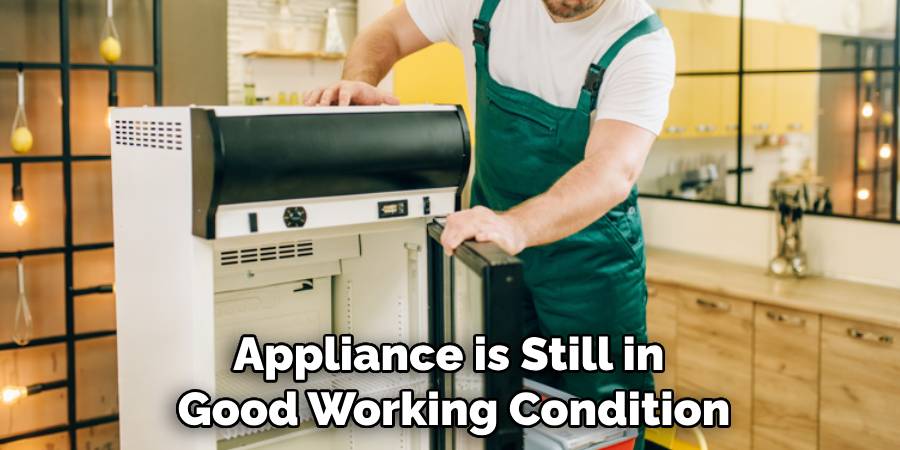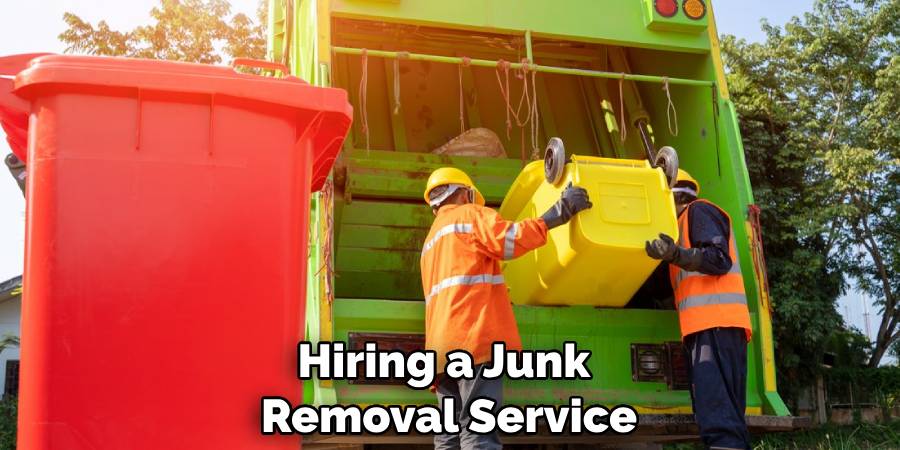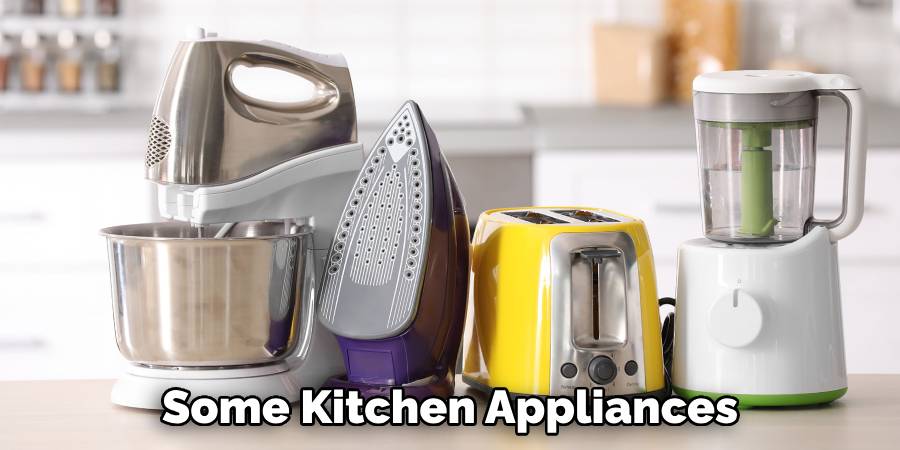When it comes to disposing of old or broken kitchen appliances, it’s crucial to do so in an environmentally responsible manner. These appliances contain valuable metals and components that, when properly reclaimed, can be used to manufacture new products. Additionally, careless disposal can lead to harmful substances leaking into the environment. In the following sections, we will detail step-by-step procedures for How to Dispose of Kitchen Appliances.

How to Prepare Kitchen Appliances for Disposal
Before you start the disposal process, it’s important to prepare your kitchen appliances correctly. For ovens, microwaves, and grills, ensure that they are completely clean, without any remaining residue or grease. This will make the recycling process easier and safer. For refrigerators, freezers, and dishwashers, safety is paramount. Be sure to unplug the appliance before beginning the preparation. This will prevent any electrical accidents during the disposal process. Additionally, empty the appliance of any remaining food or liquids to avoid attracting pests.
Step-by-step Procedures on How to Dispose of Kitchen Appliances
Step 1: Donate to a Charity or Organization
If your appliance is still in good working condition, consider donating it to a charity or organization that accepts used appliances. Numerous non-profit organizations, such as Goodwill or Habitat for Humanity, welcome these donations, providing them to individuals or families in need. By donating, you not only help someone else, but you also contribute to reducing waste and keeping the appliance out of landfills. It’s a win-win situation for everyone involved, from the environment to the person who will use the appliance next.

Step 2: Sell It Online
If donating isn’t an option and the appliance is still in reasonable working condition, another great alternative is to sell it online. Websites such as Craigslist or Facebook Marketplace are excellent platforms where you can list your used appliances for sale. This not only allows you to recover some of the initial investment but also ensures the appliance finds a new home where it can continue to be useful. Always provide an honest description of the appliance’s condition to maintain trust within these online communities.
Step 3: Recycle
If your appliance is no longer functional, recycling is an excellent eco-friendly option. Check with your local recycling center to see if they accept large appliances. Some centers specialize in recycling large appliances, breaking them down, and reclaiming valuable metals and components for reuse. Some recycling centers may even offer a pick-up service for larger items, saving you the trouble of transportation. Remember, responsible disposal of kitchen appliances is not only good for the environment, but it also helps reduce the demand for new resources.
Step 4: Contact the Manufacturer
Many manufacturers run take-back programs where they will dispose of their old products properly and responsibly. This can be a viable option particularly if the appliance is not in a condition to be donated, sold, or even recycled. Contact the manufacturer of your kitchen appliance directly to inquire if they offer such a program. Often, these companies will provide you with instructions on how to prepare your appliance for pick-up or drop-off. By choosing this method, you are ensuring your appliance is disposed of in an environmentally friendly manner, adhering to both local and global sustainability standards.
Step 5: Hire a Junk Removal Service
If all else fails, consider hiring a professional junk removal service. These companies specialize in the safe and efficient removal of large items, including kitchen appliances. They will come to your home, pick up the appliance, and ensure it is disposed of correctly, often recycling parts where possible. Keep in mind, however, that there might be a fee associated with this service. Always ask for a quote beforehand to avoid unexpected costs. Despite the potential cost, hiring a junk removal service can be a convenient and hassle-free option, particularly for large or heavy appliances that are difficult to move.

Step 6: Check With Local Waste Management Services
In some regions, local waste management services host special item pick-up days where they will collect large appliances for disposal. It’s a beneficial program aimed at facilitating the disposal of large items that might not fit in your regular trash bin. Reach out to your local waste management department to inquire whether they offer such a service in your area. Make sure to ask about the schedule and any specific guidelines you need to follow when preparing your appliance for pick-up. This is another great way to ensure that your old kitchen appliance is disposed of responsibly and by local regulations.
Step 7: Upcycle or Repurpose
If your appliance has reached the end of its functional life but you’re feeling creative, another option is to upcycle or repurpose it. This involves giving your old appliances a new lease of life, transforming them into something completely different. For instance, an old refrigerator can be repurposed into a trendy cooler for outdoor gatherings, perfect for summer barbecues or family events.
Similarly, an old washing machine drum can make for a unique and functional fire pit, providing a cozy atmosphere for those starry night gatherings. This approach not only reduces waste but also provides you with a unique and personal item that can be a real conversation starter. It’s worth noting that safety should always be your priority, so if you’re unsure about how to safely repurpose an appliance, seek expert advice.
Step 8: Properly Dispose of Hazardous Materials
Some kitchen appliances, such as refrigerators and freezers, contain hazardous materials like refrigerants or mercury switches that require special disposal procedures. It’s crucial to ensure these materials are handled safely and responsibly to prevent environmental harm or health risks. Before disposing of such appliances, check with your local environmental agency or waste management services for specific guidelines.
They can provide you with the necessary information and resources to safely dispose of these hazardous materials. Never attempt to remove these substances on your own without professional guidance as they can pose serious health threats if mishandled.

What Are Some Common Kitchen Appliances That Can Be Recycled?
Kitchen appliances, like most household items, have a limited lifespan. Over time, even the most reliable and well-maintained appliances eventually reach the end of their functional life. When this happens, it’s essential to dispose of them properly and responsibly to avoid contributing to environmental waste. Here are some common kitchen appliances that can be recycled:
- Refrigerators
- Ovens
- Stoves and cooktops
- Dishwashers
- Washing machines and dryers
- Microwaves
Some of these appliances may contain hazardous materials, as mentioned earlier, so it’s essential to follow proper disposal procedures. By recycling these appliances, we can reduce the demand for new resources, prevent unnecessary waste in landfills, and contribute to a more sustainable future. So, when it’s time to upgrade your kitchen appliances, remember the options available for responsible disposal and choose the most suitable one for you. Together, we can make a positive impact on our environment and create a better world for future generations. Happy recycling!
Frequently Ask Question
How Do I Get Rid of an Old Refrigerator?
The best way to dispose of an old refrigerator is through recycling. Many appliance stores and manufacturers offer a pick-up service for old refrigerators, or you can contact your local waste management services for specific guidelines on how to prepare it for recycling. It’s essential to handle refrigerators safely as they may contain hazardous materials that require proper disposal procedures.
How Do You Dispose of a Range Cooker?
Similar to refrigerators, range cookers can also be recycled through pick-up services offered by appliance stores or manufacturers. Alternatively, you can check with your local waste management services for specific guidelines on how to dispose of it responsibly. Make sure to remove any hazardous materials before recycling the cooker.

How Do You Remove Appliances?
To remove appliances from your home, you can either do it yourself or hire a professional junk removal service. If you choose to do it yourself, make sure to follow proper safety measures and have assistance if needed. Hiring a professional service is another convenient option as they are trained and equipped to safely remove large and heavy appliances from your home. Always ask for a quote beforehand to avoid unexpected costs. Overall, the key is to ensure that appliances are handled and disposed of responsibly, whether you do it yourself or seek professional help.
Conclusion
In conclusion, properly disposing of kitchen appliances is not only important for your safety and the environment, but it can also save you time and money in the long run. By following these step-by-step procedures, you can ensure that your old appliances are disposed of correctly and responsibly. Remember to always check with your local waste management or recycling center for specific guidelines and regulations.
And when in doubt, consult with a professional to ensure proper disposal. By taking these small steps, we can make a big impact on reducing our carbon footprint and preserving our planet for future generations. So next time you’re ready to upgrade your kitchen appliances, remember these tips on how to dispose of them responsibly.
Let’s continue to work towards making our world a cleaner and healthier place for all. Together, we can make a difference in how we consume and dispose of household items. Thank you for reading our blog post on how to dispose of kitchen appliances – now go out there and take action!
